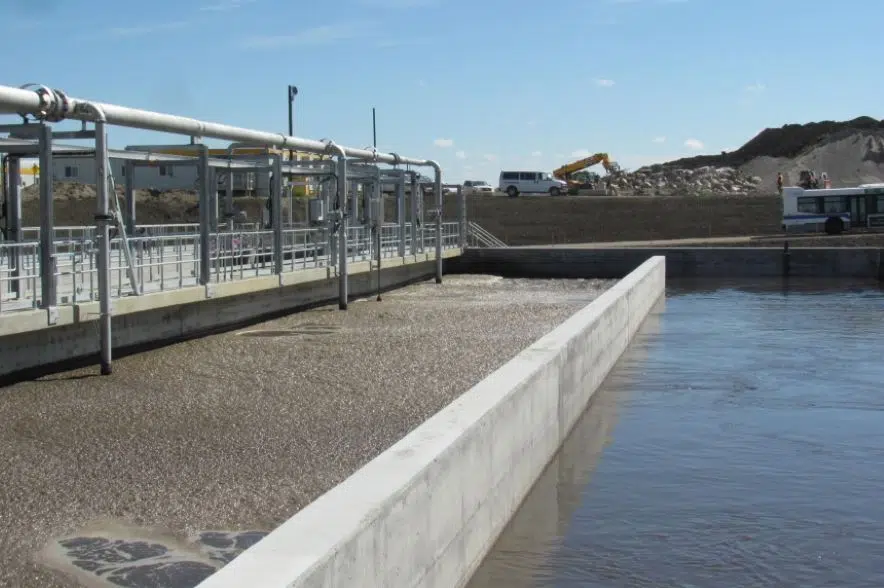A recent decision out of the Court of King’s Bench is shedding light on some of the construction and operational problems at Regina’s wastewater treatment plant as it neared the end of the upgrade.
Construction began on the plant in 2014 after a fair bit of controversy and a referendum on how the plan would be financed.
Epcor Water Prairie Inc. was contracted to do the upgrade and it subcontracted the design and construction to Graham-Lockerbie Stanley JV, referred to as GLS in the lawsuit. Ovivo Inc. was contracted to manufacture, supply and install three clarifier mechanisms in the secondary clarifiers.
The problems outlined in the lawsuit are around those clarifier mechanisms. GLS alleged negligence in the design and manufacture of the mechanisms, including losses and damages like diagnosing the cause of the plant’s “poor performance.”
The mechanisms were installed in the first half of 2016 and the secondary clarifiers were in operation by July 27, a little over six months ahead of the substantial completion date.
In June 2016, Epcor said about 75 per cent of the city’s wastewater was going through the new treatment process and had been for a few months.
In the contract with the city, Epcor had to complete a successful 30-day performance test of the plant before the substantial completion date of Dec. 31, 2016. If it wasn’t done, the city could withhold $25 million from the payment due to Epcor.
The first such test was started in October of 2016, but was stopped because of operational issues including with the bio-reactors in the secondary treatment phase, and Epcor got the city to allow it to defer the test into 2017.
Emails provided to the court and summarized in the decision talk about issues with the operation of the clarifiers and “keeping the sludge blankets down.”
Stantec, the lead consultant on the project, told GLS in an email that the difficulty was due to the design of the mechanisms, and in particular, the rotation speed. Another email a couple weeks later said calculations showed an issue with the mechanism design.
“This issue needs to be addressed immediately and is just as important as the baffles (in the bioreactors) in terms of getting ready for a successful 30 day performance test. We will not pass the clarifier solids loading test with the clarifiers as is,” read an email excerpt reprinted in the court decision.
In more emails later in January, the manufacturer, Ovivo, said the high sludge blankets weren’t its fault, but were due to operational issues with the plant and the sludge itself – though Stantec once again disagreed, saying the problem was with the rotation speed of the mechanisms and the depth of the blades.
In July 2017 the secondary clarifiers failed a loading test and Stantec once again felt that it was due to the scraper blades on the mechanism.
Eventually Ovivo agreed to supply taller scraper blades and they were installed in September 2017. The 30-day test of the plant was successfully completed in December of 2017.
That was just about a year after the substantial completion date when the City of Regina and Epcor declared the plant upgrades substantially complete with only landscaping and aesthetic improvements left to be done.
“Over the next three months we’ve got some minor things to clean up and get final completion,” Epcor’s Steve Stanley said at the time.
However, according to the court’s decision, the secondary clarifiers continued to “perform poorly” after the 30-day test and weren’t able to achieve the effluent parameters specified in the agreement between Epcor and the City of Regina.
The decision determined the lawsuit was outside the time limits set out for action, but didn’t determine who might have been at fault for the problems.
On Epcor’s website, it said it completed the final performance testing and facility requirements in December 2018.
Epcor declined to provide anyone for an interview to explain what “perform poorly” meant or what the effects were for those downstream of the plant when it was having its difficulties.
The company sent a statement saying it has met all of its environmental reporting requirements and communicated with its partners, the City of Regina, regulators and downstream users during commissioning and operation of the plant.
“Through the testing and commissioning phase of the plant, any issues affecting plant operations at that time were identified and addressed,” read the statement.
“There have been no negative impacts on downstream users or water bodies as a result of any performance of the wastewater treatment plant.”
The upgrades were done, at least in part, to meet higher standards for treatment and studies have shown the water discharged into Wascana Creek has significantly improved since the upgrade.











